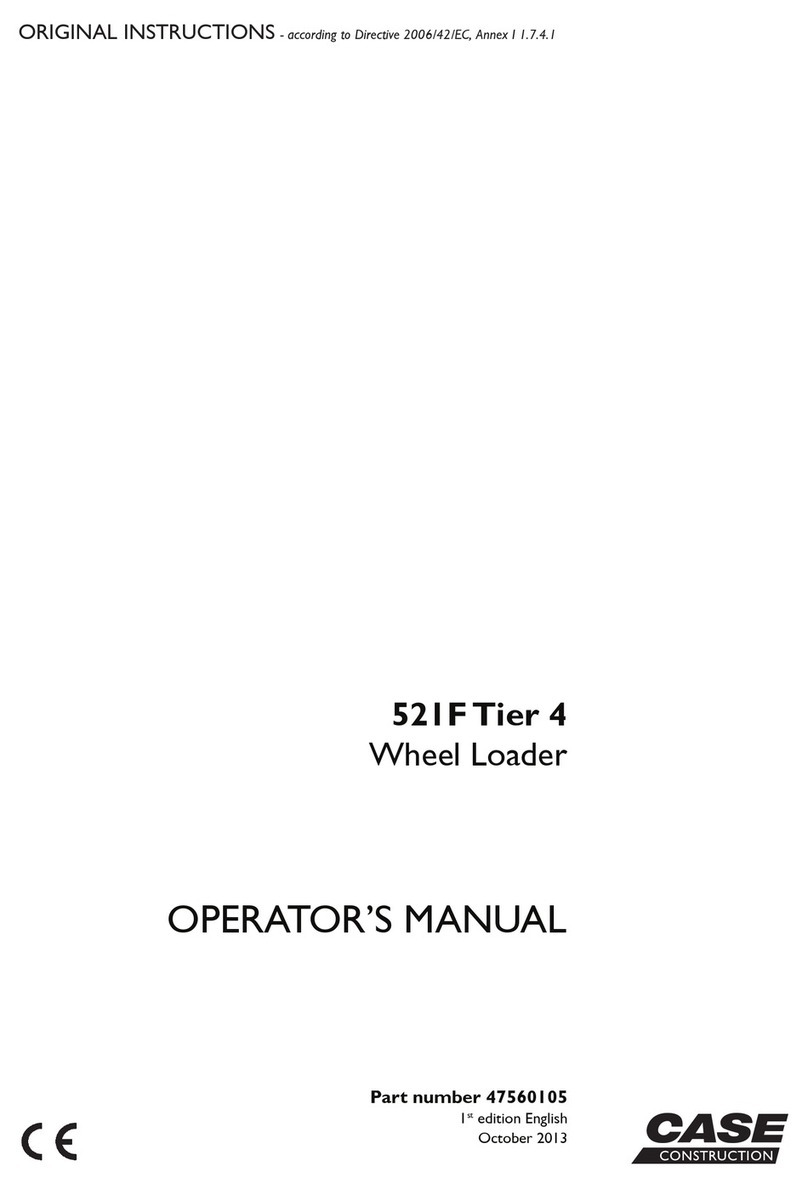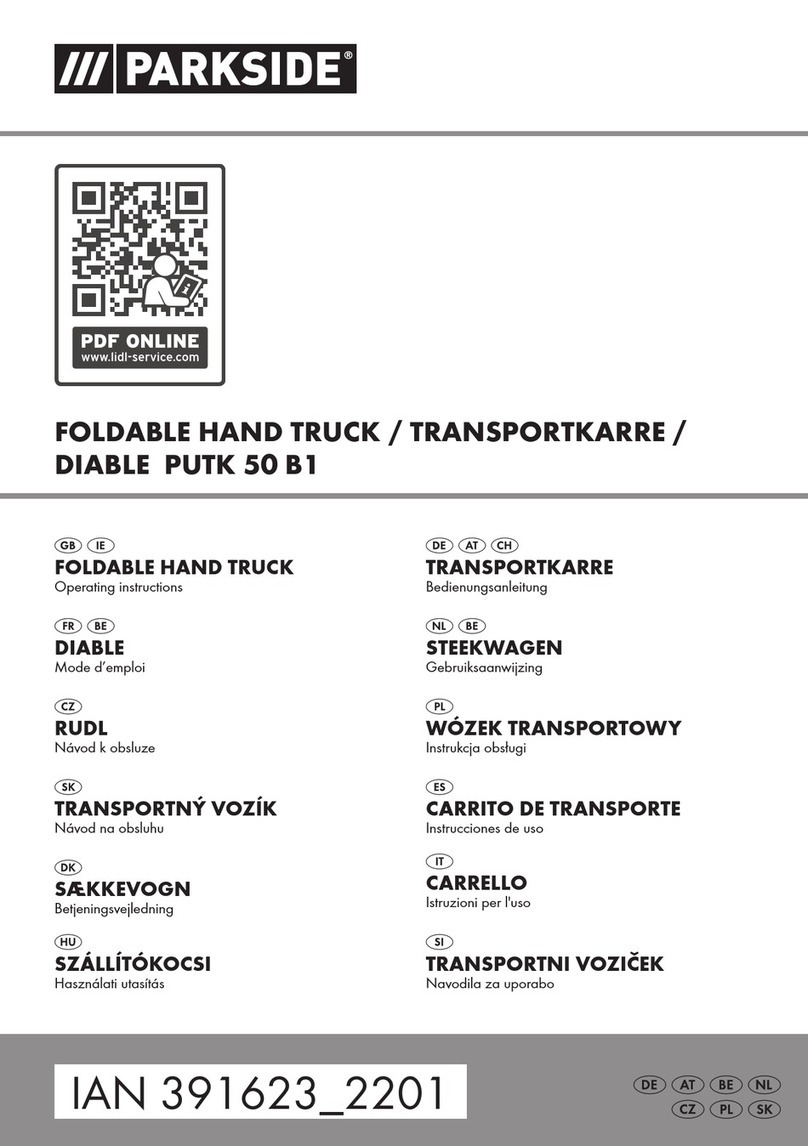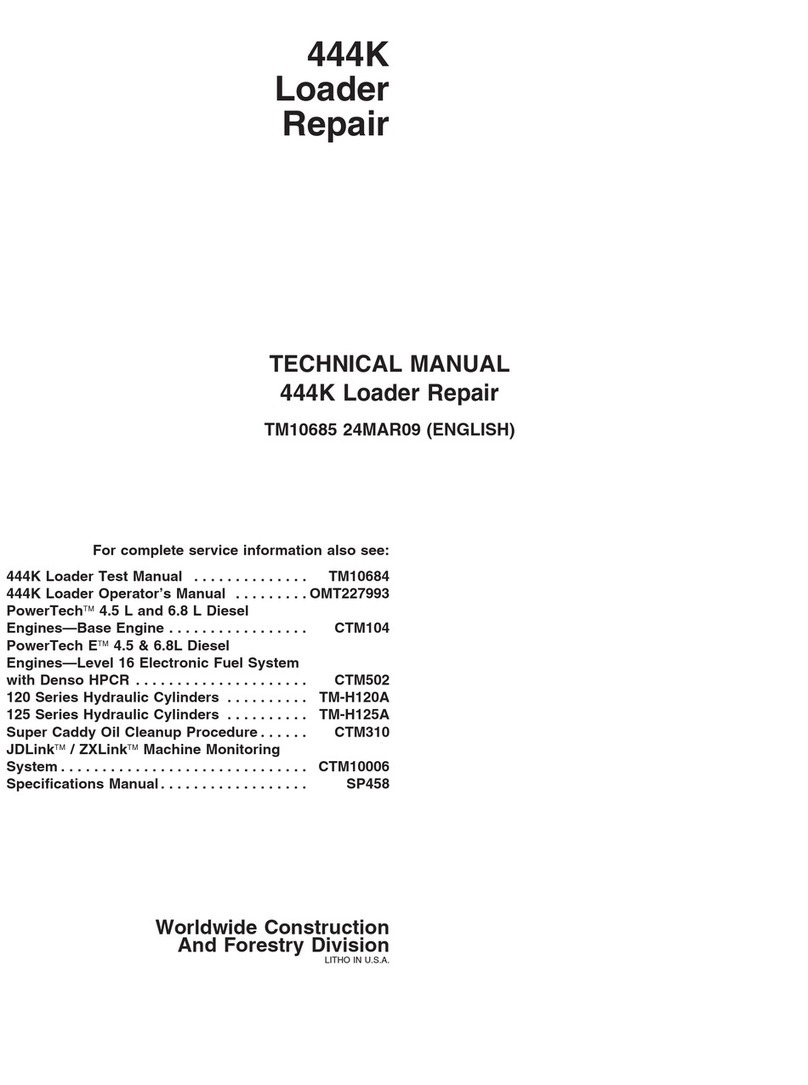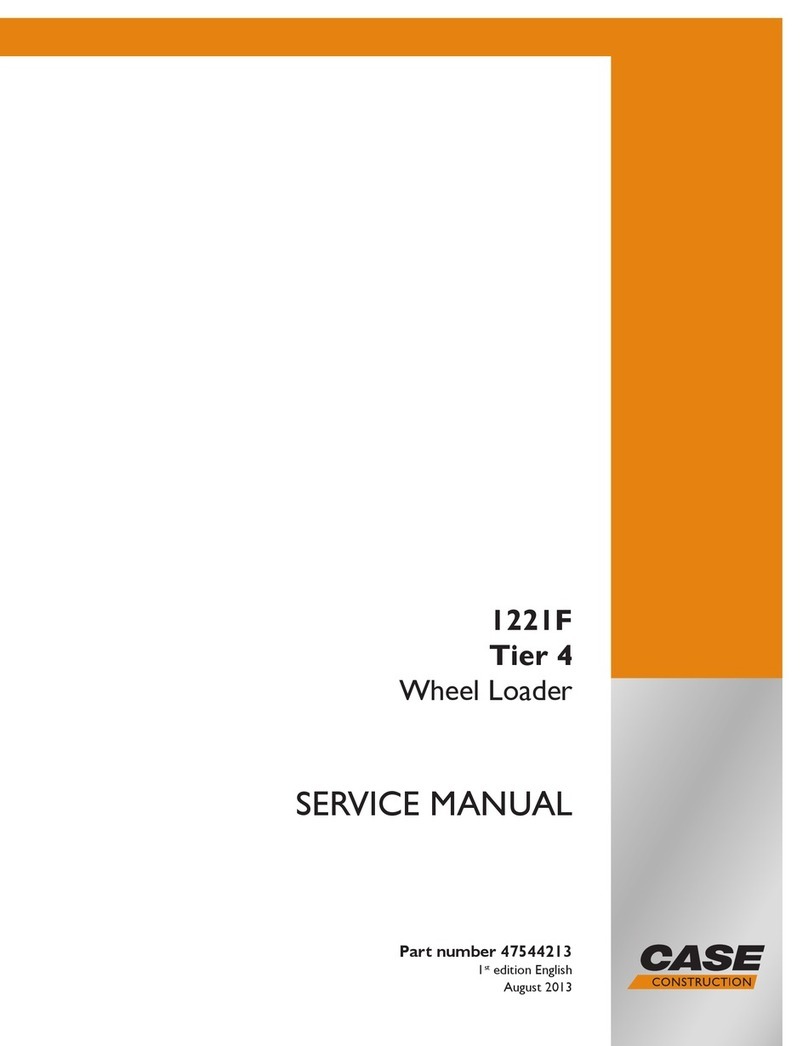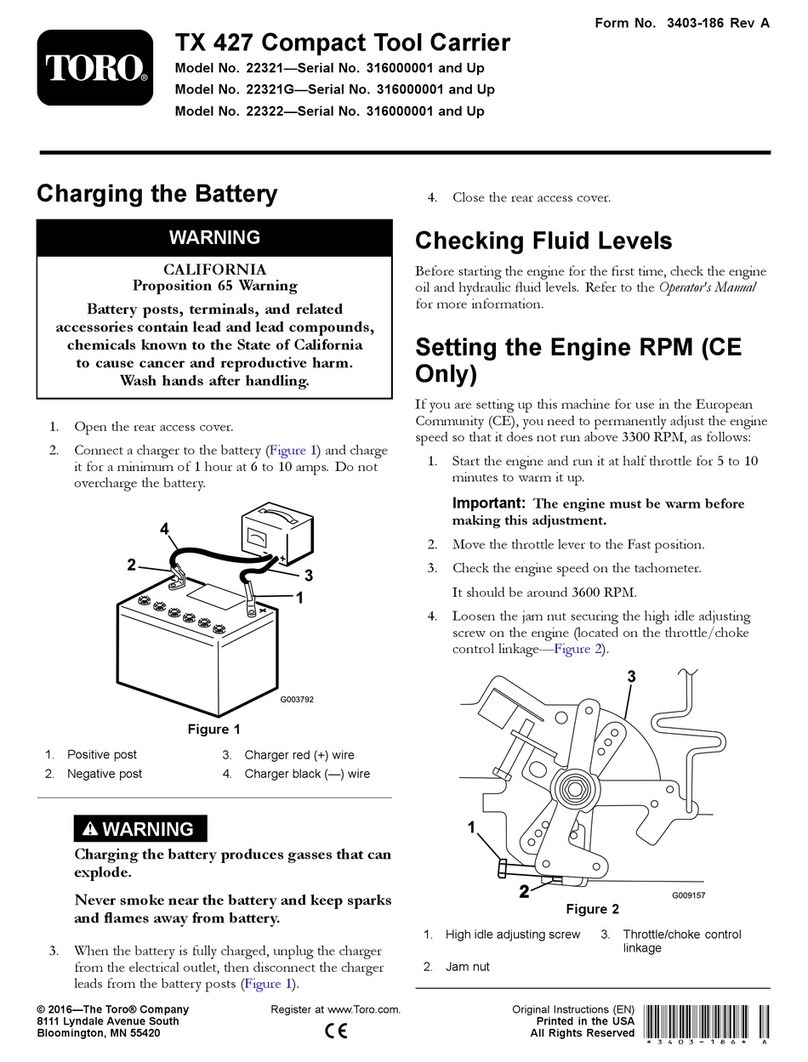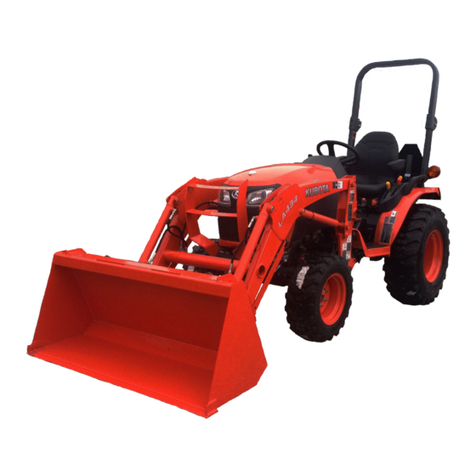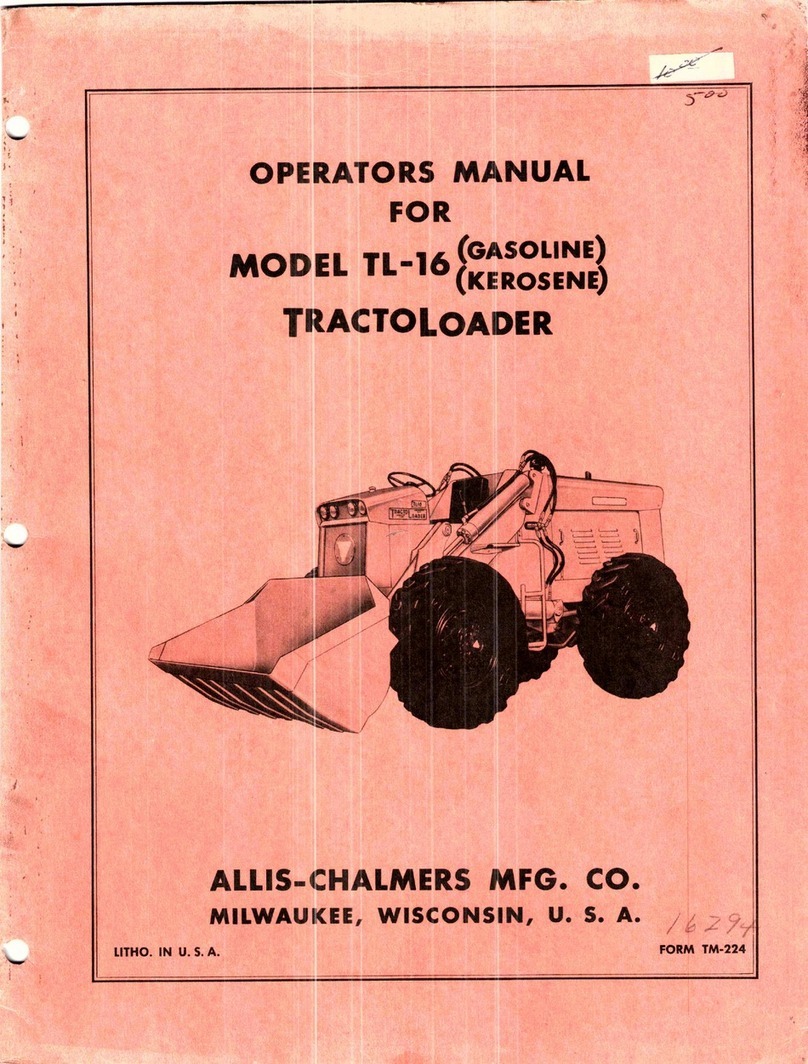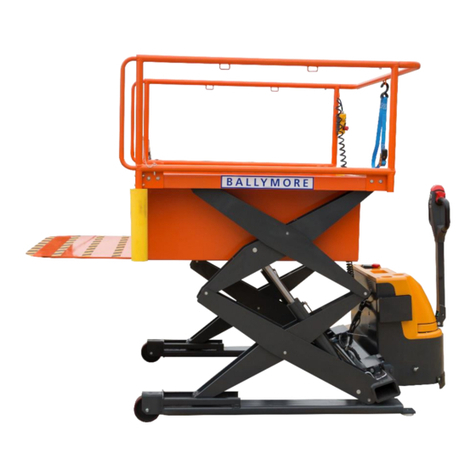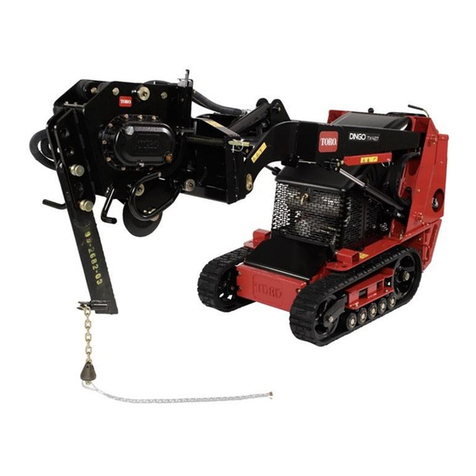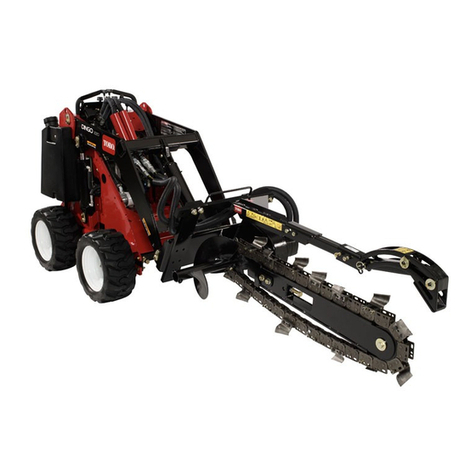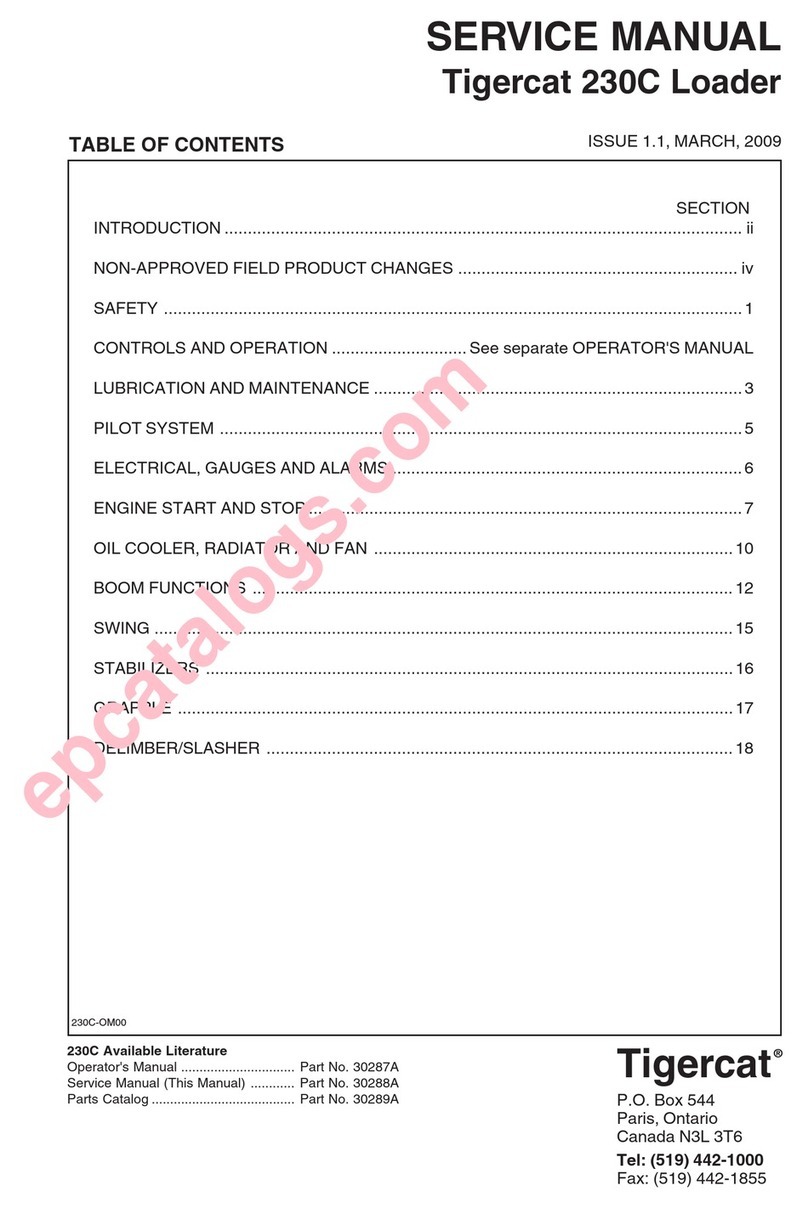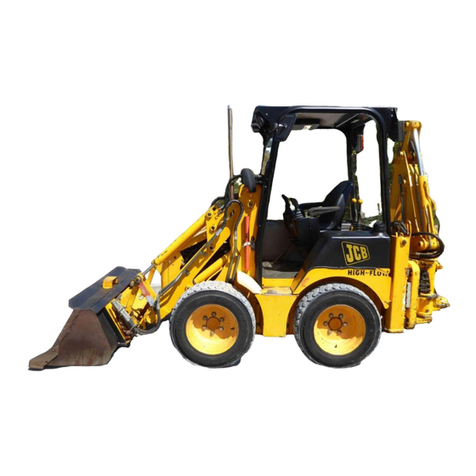Operation
1. With the operator in the seat of the loader, the
seat belt fastened and the seat bar lowered (if so
equipped), start the engine.
2. Activate the high flow auxiliary hydraulic system
to start the drum rotation, and then making sure
to increase the loader engine to full throttle.
IMPORTANT: Engine must be at idle speed when
engaging auxiliary hydraulic system.
NOTE: Certain loaders may not operate in high
flow mode without a special wire harnesses.
Others require the control switches to beoperated
in a specific way. It may also be necessary to
switch the hose couplers around to match your
loader. (See the loader’s operation and
maintenance manual)
3. With the loader boom lowered completely and the
auxiliary hydraulics engaged, slowly rotate the
loader coupler forward until the attachment skid
shoes are in contact with the ground.
4. Before advancing with the loader, slowly raise the
left and right skid shoes until the desired depth of
cut is achieved. (Up to 6” for most models)
NOTE: For optimal performance, the majority of the
weight of the front of the skid steer should be placed
upon the planer with the loader arms fully lowered.
The transfer of skid steer weight to the attachment will
result in a smoother and faster milling operation. The
loader arms should never be placed in the float
condition: excessive vibration will result.
NOTE: In some cases the drum rotation may stall
when the load on the planer is too high. This is most
likely the result of excessive ground speed. The
hydraulic reliefs on board the loader are designed to
prevent damage to the hydraulic system by diverting
all flow from the planer motor. If this occurs, stop or
slightly reverse the forward progress of the skid steer
and allow the drum to return to full operating speed
before continuing.
NOTE: Be aware that the wheel motor will lose power
while the other auxiliary functions are in operation.
